AMER FORT OR AMBER FORT
Amer or Amber is a small town near Jaipur. It was the formal Capital of Kachwaha Rajput, and later they built Jaipur to transfer their Capital. Let’s talk about the beauty of this exciting place. It has almost everything from nature to a gigantic Amer fort. A solid defensive wall surrounds the whole Amer village. The green mountains of Aravali Also surround it; there are few lakes, making it a perfect location.
Before Kachwaha Rajput local community Meena was ruling here. Kachwaha rulers built a strong fort here. Later this fort gained so much importance because of its strategic location. After shifting Capital from here, Kachawah maintained this fort. Finally, Govt took this fort from the Royal family. They declared a world heritage site in 2013 along with five Hill forts of Rajasthan.
AMER FORT TIMINGS : Morning 8:00 To 7:00 Evening
Table of Contents
AMER FORT TICKET PRICE
ENTRANCES : INR 100 /- INDIAN INR 500/- FOREIGNERS
STUDENTS: INR 10/- INDIAN INR 100/- FOREIGNERS
ELEPHANT RIDE : 1100/- PER PERSON
INSIDE AMER FORT
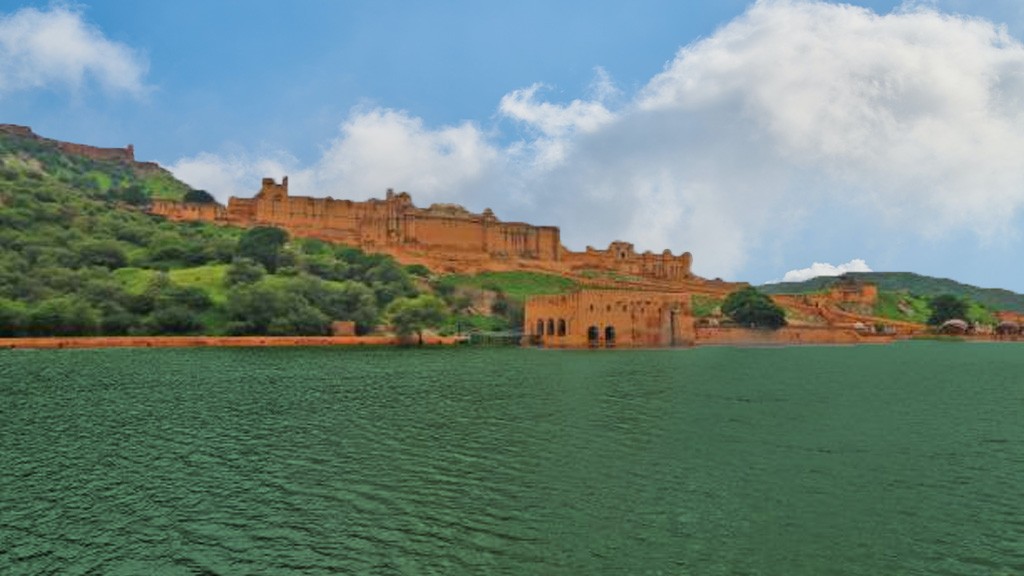
AMER VIEW: Before going to Amer Fort, you will come across this fantastic fort view with moat lake. Whoever is visiting Amer should not forget to click pictures from here. Interestingly, there is one photo point also. Moata lake was essential for Amer those days, and it was the only lake and source of water in the Amber village.
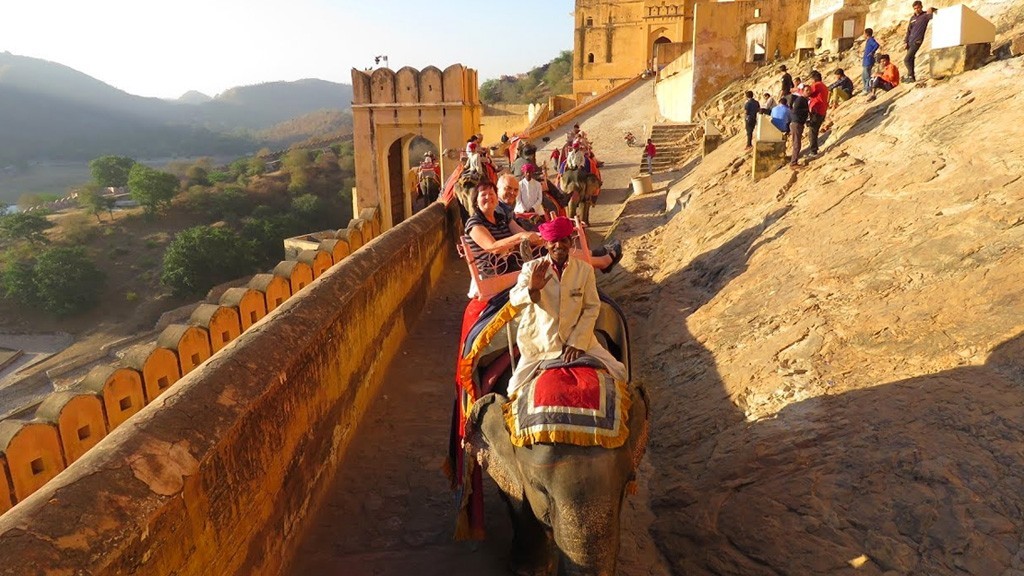
HOW TO GO: There are three ways to go to the Amer fort. As we this is a hill fort:
- An elephant ride; you can book an elephant from the stand, and only two people can sit on one Elephant.
- A jeep ride; you also can hire a jeep ride from the Elephant’s stand. If you have your car, then go by car.
- There Are stairs; you can also go on your own.
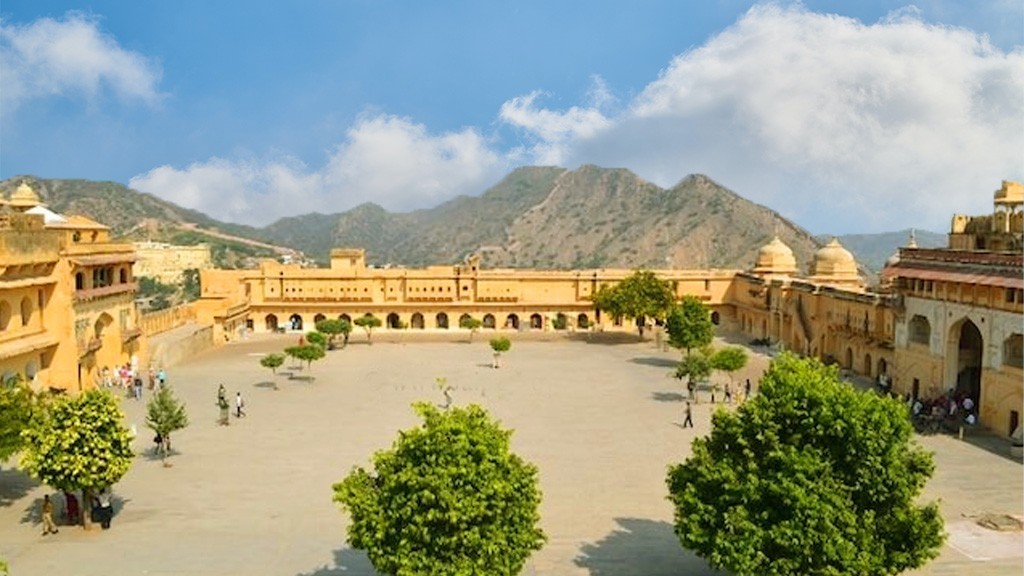
JALEB CHOWK: This big opened courtyard has historical importance. According to history, the King of Amber and his minister used to sit inside two prominent domes on the top. Every day they both used to inspect the army. Interestingly, When Amber used to defeat another army, they captured the wealth of conquered kingdom. On Jaleb chowk, they had to show all wealth of the defeated empire to the King here.
SURAJ POL: This sun-facing massive gate is on the jaleb chowk. Pol means gate in Rajasthan, and it is now the entrance of elephants also. Surprisingly, you can find small cupolas of soldiers there to defend.
CHAND POL: Another moon-facing gate has identical features as Suraj pol. As opposed to suraj pol it has Naubat Khana on the top. In Rajasthan, you will find many entrances to go inside the fort. The reason behind these entrances is defense and security.
NAUBAT KHANA : It means drum house. When King entered, they played drums to give him a warm welcome. Interestingly, you can still listen to this instrument, and it is on the top of Chand pol.
SINGH POL: Lion gate is on the top of the Jaleb Chowk. You have to use this gate to go inside Amer fort, and there are stairs to reach the gate. Notably, the fresco paintings of Singh pol are worth watching.
SHILA DEVI TEMPLE: An exciting story of a dream related to this temple. Goddess Kali asked Raja Man Singh I to find her statue. As a result, he saw substantial black marble near Bangladesh and installed it here. Keeping in mind, he was there in a military campaign.
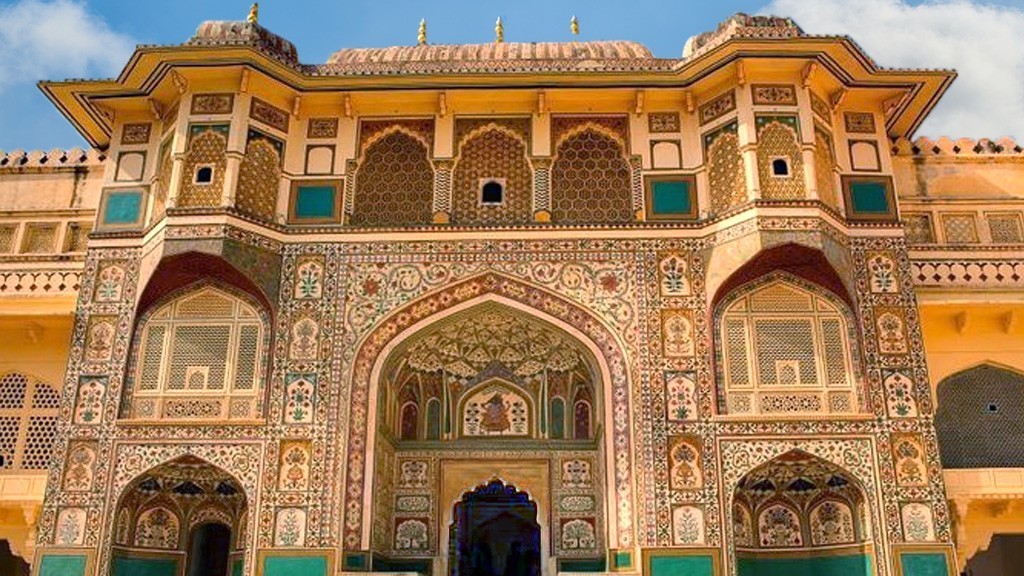
GANESH POL: Probably this Ganesh pol is the most beautiful gate in Rajasthan. The most important feature of this gate is paintings. Surprisingly, artists used all-natural colors to paint this gate, and the color combination is beyond explanation. In addition, the marble window on the top makes it more beautiful. Ganesh pol has paintings of Ganesha in the center. Through this gate, you can go to the private palace of the King of Amber.
SATTAIS KACHERI : Kacheri represents justice system on India. In medieval times it was the duty of every King to provide good justice to his people. There used to judge to deliver justice. In sattais kacheri, twenty-seven judges used to sit here to serve Amber.
VIEW OF LAKE AND GARDEN: From sattais kacheri, you can watch this most beautiful view of Amer Fort. King of Amber builds this Azafran garden for Queen, and it looks so amazing with the lake.
HAMAM: Turkish bath of Amer fort has its importance. As we already know, Mughal art influenced local architecture. King of Amber had family relations with Mughal Empire, which inspired him to build hamam here. Interestingly, there is a concept of Coldwater, Hot water, Steam bath, etc.
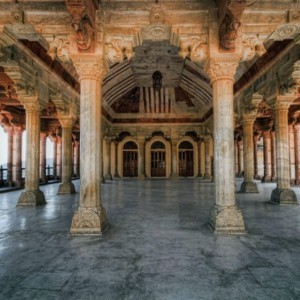
DEEWAN E AAM: Public audience is the best example of the governance of India. Interestingly, almost every King used a public audience to talk with the public. People came with problems and told King here, providing a solution. Sadly, there is no concept of asking questions to Ministers in today’s world.
According to history, King every day sat here to give a solution to his people. Keep in mind there is a difference between the public and private audience. In public, there was a meeting with the public. On the other hand, the Private audience was ministers to meet with Kings. Every big fort has these two audiences consistently.
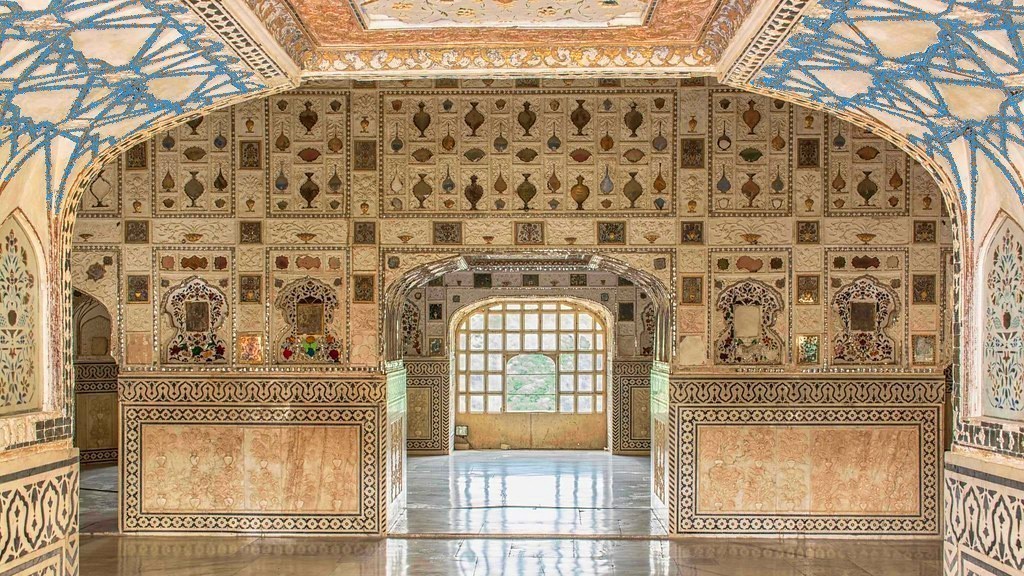
SHEESH MAHAL AMER FORT : Winter palace, Diwan e Khas, Glass palace, call it whatever you want. Indeed the beauty of this beautiful structure is beyond explanation. During winter, it was the residence of King. He also used it as a private audience to meet with ministers. Interestingly, they only made it using lime; there is no stone except marble pillars. Moreover, they beautified it with glasses.
Imagine they used only one candle to light up the whole palace; there were Pashmeena carpets on the floor. Moreover, painted curtains and flowers. Indeed the rich history of India is worth reading.
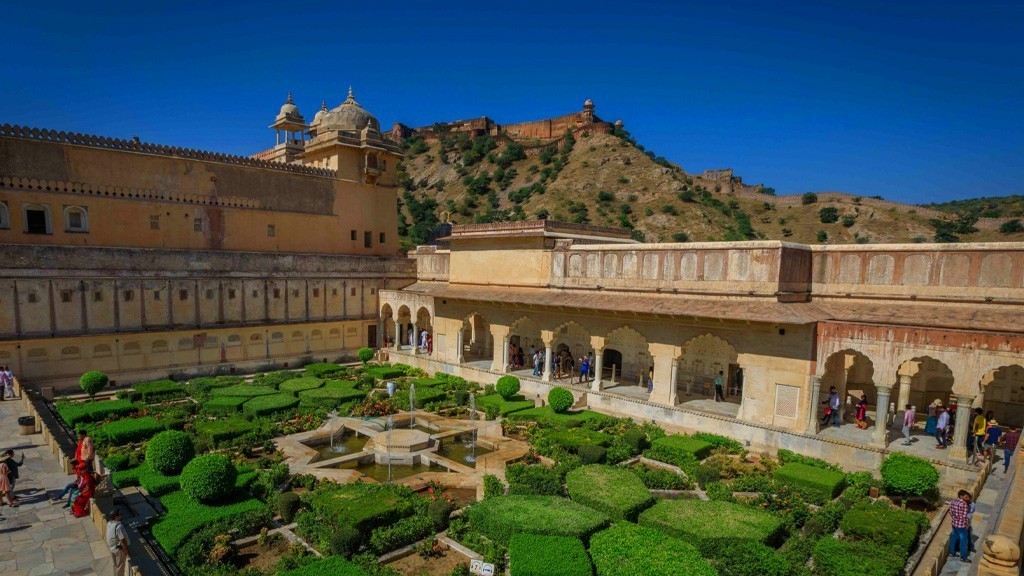
GARDEN: In the private part of Amer fort, you will come across a gorgeous garden. Star fountain is enhancing its beauty. During summer, it was a great source of pleasure. Importantly, you will see geometrical shape design in this garden. These geometrical shapes are influenced by Mughal architecture. Interestingly, you will find a seat just outside of Sheesh mahal. On this place, King sat and got some relaxation from heat.
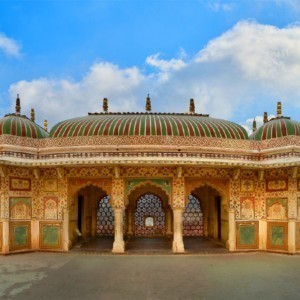
SUHAG MANDIR: There are stairs on the left of Sheesh mahal to go on the top. Sugah Mandir was the palace for royal ladies. Interestingly, they used to watch dewan e aam hearing from here. Marble windows of Suhag Mandir are just so beautiful to watch.
There is always a question about the life of royal women during those days. They were allowed to watch the hearing of the public audience. As a result, there were places for them to see; on the other hand, no one was allowed to watch them. These windows give them a view to watch public life.
SUMMER PALACE: Therein Summer palace also in Amer fort. This white marble palace has many windows of marble for air. Surprisingly, It has an airconditioned system also. Are you Shocked? Here is the answer. There are copper pipes attached with windows; when air comes inside first, it touches these pipes. As a result, inside, you will feel cold air.
It is on the top of Sheesh Mahal. Unfortunately, it is closed due to some restoration work. We are waiting to watch, once it is opened.
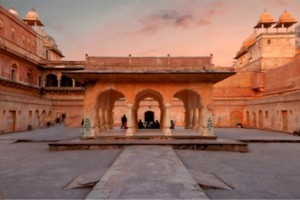
MAN SINGH PALACE: Inside Amer fort, this is the oldest part. Raja Man Singh built this palace for himself, and there are two floors for every castle here. As we already know, Raja MAn Sigh I was Mughal Empire trusted general and brother-in-law of Great Mughal Emperor Akbar.
In the 16th century, Kachwah Rajput joined hands with the Mughals; then, this region flourished economically. Importantly, you can easily find Indo-Islamic architecture here. His Sister Maharani Man Bai got married to Akbar.
Raja Man Singh had twelve wives, and he built one palace for every wife. Indeed, his private room is surrounded by all these palaces, and it is on the first floor. Interestingly, there was always a chief wife (patto rani), and the room of Patto rani was just below the palace of Man Singh Place. There is also one small Hamam for her just outside her room.
AMER FORT HISTORY
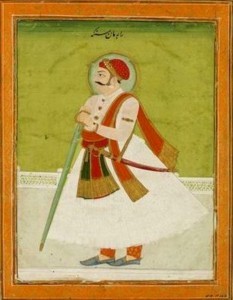
Earlier history: According to the historical account, King Alan Singh Chanda of the Meena community ruled here in the Amer fort. In the 11th century, Kachwaha Rajput took the fort after defeating them. Here is one thing we should keep in mind during this time, there was no Central King, Who was ruling the whole of India. Indeed, there were many small kings. As a result, they always used to fight each other to gain an advantage. Apart from this, Raja Man Singh and Raja Jai Singh I built the present structure of Amer fort in 16th and 17th century respectively.
Raja Man Singh I of Amer was born in 1550. He was a brilliant and brave ruler. Interestingly, he won many battles for Mughal Empire, including the Haldi ghati battle against Maharana Pratap. This brave son of Rajput and warrior of India died in 1614. Interestingly, He built the oldest existing part of Amer fort. You can visit Man Singh Palace within the fort.
Mughal Emperor Akbar joined hands with many Local kings. He assured them that he would not interfere in their state affairs. They had the liberty to rule as long as they were committed to Mughal Empire. Significantly, He also gave them the Most Important posts of the Mughal empire. For Example, Raja Man Singh I was the military General of the Mughal army. His Sister Man bai was the wife of Akbar.
Jai Singh I: After Man Singh I Mirza Raja Jai Singh, I became head of Kachwaha Rajput in 1614. He gave his best service to Mughal Empire. There is no doubt he was fearless, fought many battles. Interestingly, he defeated Maratha and took Chatrapati Shivaji to Agra. After Man Singh I, he built many palaces inside Amer fort.
Jai Singh II: This astronomical King was Kachwaha’s ruler from 1699 to 1743. After Jai Singh I, he was the head of state. Kachwaha Rajput was so close to Mughal Empire in relation. Interestingly, Agra and Delhi were also so close to Jaipur. He converted many stone palaces into marble palaces. Finally, he transferred Capital from Amer to Jaipur and built a walled city.
Here you have to understand why the big central king was necessary to unite all small kings. For Example, Maurya Empire, Gupta Empire, King Harsha, Delhi Sultanate, Mughal Empire, and the British Empire ruled India as a Central power, securing boundaries from invaders. As a result, India did not suffer every time from looting and destruction during these times.
AMER FORT ARCHITECTURE
RAJPUT ARCHITECTURE: During their reign, Rajput kings built numerous forts, temples, palaces, step-wells, etc., and Amer fort is one of them. In India, there are different types of architectural features in every part of this vast country. For example, Bengal has different in comparison to Deccan, and the northeast is other in contrast to Gujrat. Back to the point, Rajput architecture has many features like sculptures on walls, Jharokha windows, Rajput dome, etc. The most important part is, building forts on hills. There was a heavy influence of Indoislamic art during the Mughal time, later IndoSarsenic during British Empire.
INDOISLAMIC ARCHITECTURE: When Muslim Kings started ruling here, they used their architecture. Significantly, Islam has no architecture; there is no description in the Glorious Quran. Even in Saudi Arabia, people do not have these architectural features. Islamic architecture is all about Central Asian architecture—for example, Domes, Arches, Flowers, Tiles, Gardens, etc. Finally, our local artist mixed both architectures, Indian with Islamic. As a result, Indo-Islamic architecture emerged—for example, Inverted lotus on the top of the dome. You can see this art in Amer Fort.
FACTS OF FORT
There are many exciting facts about Amer. Let us discuss them as there is always something special in every monument of India.
1 It’s a World Heritage site, along with the five hills fort of Rajasthan. In 2013 they declared six hill forts of Rajasthan as a world heritage site; These are Chittorgarh, Kumbhalgarh, Ranthambore, Amer fort, Jaisalmer, and Gagron.
2 Present structure took a century to be complete. Raja Man Singh started building this with his palace. Later, Raja Jai Singh, I added many palaces and gardens. Finally, Sawai Jai Singh II beautified buildings with white marble.
3 Shila Devi Temple: Raja Man Singh I saw goddess Kali in a dream. She asked him to find her statute in Jessore shore (near Bangladesh). As a result, he took a black stone and built her temple.
4 Moata lake is a beautiful lake located in Amber village. Surprisingly, it was the only source of water during those days, and it fulfilled the need and enhanced the beauty of the fort.
5 A colossal wall surrounds Amer Village. Those days there were repeatedly attacked by Invaders. As a result, Kings of Amber built this defensive wall.
WHO WERE KACHWAHA RAJPUT?
RAJPUT: It simply means son of a king; they ruled northern, western, and central parts of India. Many clans of Rajput ruled separately. Their ruling history starts from the 8th century till the independence of India. Undoubtedly, without the help of Rajput, the Mughal and British Empires would not be able to govern India.
Origin: In India, we have a varna system; usually, people call it the Caste system. Brahmin, Kshatriya, Vaishya, Shudra. Rajput belongs to Kshatriya because they are a warrior. According to historians, after Mauryan Empire and Gupta Empire, many invaders from the west came into India. Interestingly, they completely immersed themselves into the culture of India. They immersed themselves in Indian religion and tradition.
Clans: There are many different clans of Rajput. For Example, Kachwaha of Jaipur and Amer, Sisodia of Mewar, Rathore of Jodhpur and Bikaner, Bhati of Jaislamer, Shekhawat of Shekhawati, Chandela of Bundelkhand, Tomar and Chauhan of Delhi, etc.
PLACES NEAR AMER FORT
HATHI VILLAGE: if you like elephants, this is the best place to see them. Interestingly, you can play with them paint them. This village is very near to Amer fort.
JAL MAHAL: You can visit the beautiful Jal Mahal near Amer Fort. In 1799 Sawai Pratap Singh built this palace on Man Sagar Lake. Interestingly, the Royal family used this palace in summer.
KANAK GHATI : If you are coming from Amer fort then, you will come across kanak ghati before Jal mahal. Sawai Jai Singh II built this beautiful garden, and Mountains surround it.
WALLED PINK CITY: As we know, in 1727, Sawai Jai Singh II built this planned walled city. In Pink city you can visit CITY PALACE, JANTAR MANTAR, HAWA MAHAL, and BAZAR.
JAIGARH AND NAHARGARH : These forts are very next to Amer Fort. Surprisingly, Jaigarh fort is accessible through a tunnel from Amer. These small forts are worth watching if you have time.
HOW TO GET TO THE FORT
The distance of Amer Fort is around 11 km from Jaipur. If you have your car, then you can go directly. There are some local buses also, which are very cheap. You Also can hire an auto-rickshaw.
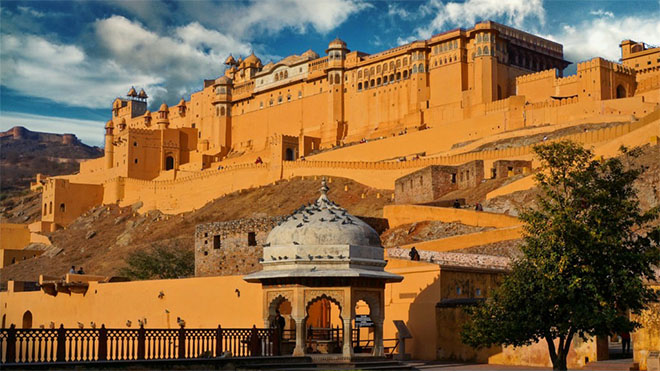
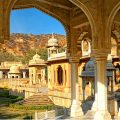
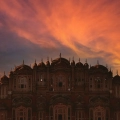

1 Comment